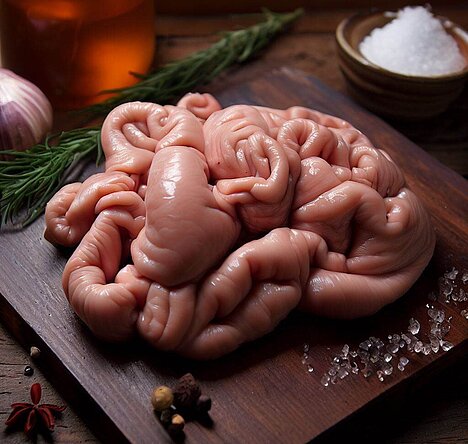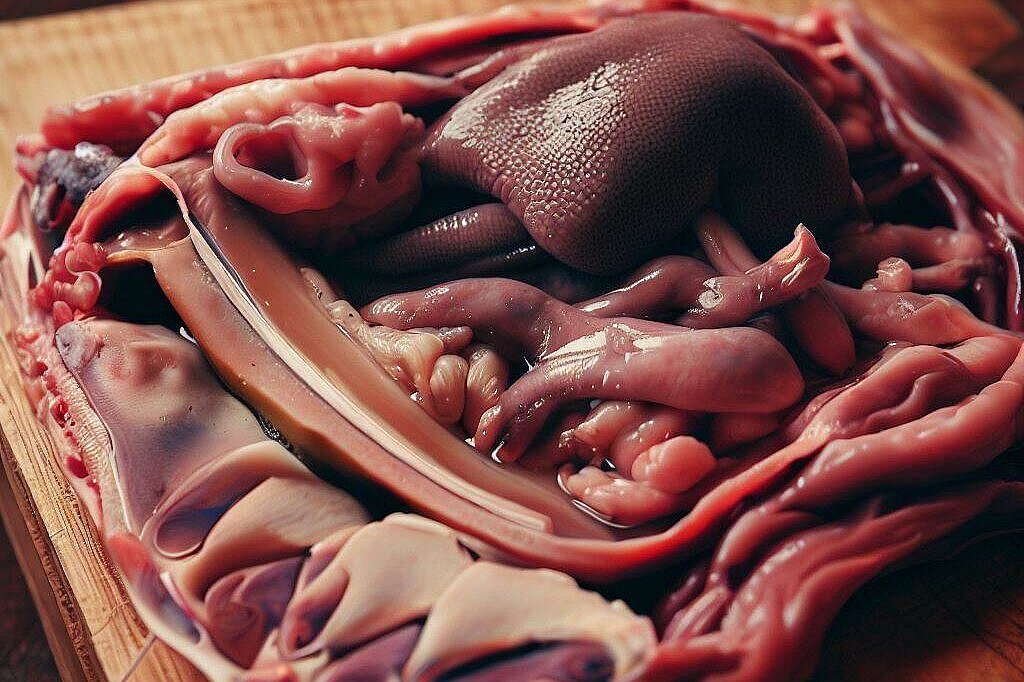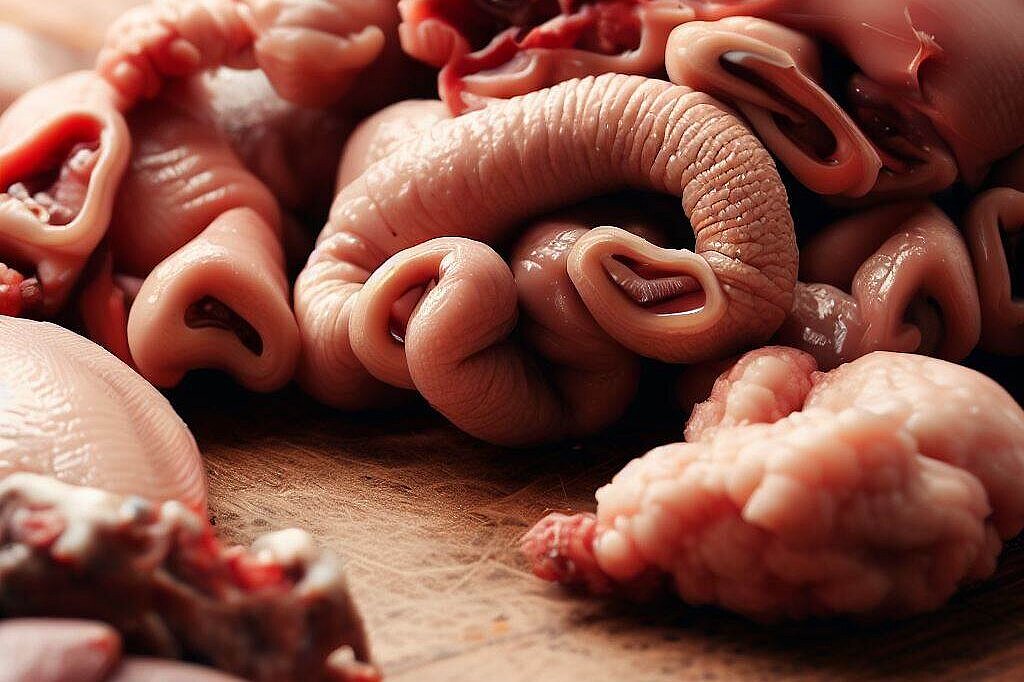Poultry giblets

What are poultry giblets?
Poultry giblets are the internal organs of poultry such as chickens, turkeys or ducks. These include, for example, the heart, liver, stomach, kidneys and lungs. These organs have a high nutritional value and contain many vitamins, minerals and trace elements. They are therefore an important addition to muscle meat and bones in a dog's diet.
What are the benefits of poultry offal for dogs?
Poultry offal has several benefits for a dog's health. Firstly, they provide high-quality protein, which is important for muscle building and cell regeneration. Secondly, they contain many vitamins, especially vitamin A, B vitamins and vitamin K. These vitamins support the function of the eyes, skin, coat, nerves and blood clotting. In addition, poultry offal is rich in minerals such as iron, zinc, copper and selenium. These minerals strengthen the dog's immune system, metabolism and thyroid gland.
What are the disadvantages of poultry giblets for dogs?
Poultry offal also has some disadvantages. For one thing, they can have a high fat content, especially in the liver and heart. This can lead to obesity or digestive problems if you feed your dog too much. Secondly, they can contain high levels of purines, which are particularly harmful to the kidneys and lungs. Purines are metabolic products that are converted into uric acid during digestion. If your dog has too much uric acid in its blood, this can lead to gout or kidney stones. Therefore, only give your dog moderate amounts of poultry offal and pay attention to his individual needs.
How can you give your dog poultry giblets?
You can feed your dog poultry offal raw or cooked. If you opt for raw, you should make sure that the offal is fresh and of good quality. You should also freeze or boil them before feeding them to kill any germs or parasites. If you opt for cooked offal, you should only cook it briefly and not add any salt or spices. You can offer the giblets as a main meal or as a snack between meals.
How much offal should you give your dog?
The optimal amount of offal depends on various factors such as your dog's age, weight, activity and health. However, as a rule of thumb, offal should not make up more than 10 to 15 percent of the daily food ration. This means, for example, that a dog weighing 10 kilograms should get around 100 to 150 grams of offal per day. Make sure that you feed a variety of offal and not just one type. This ensures a balanced supply of all nutrients.
If you notice any signs of hypersensitivity or poisoning in your dog, you should see your vet immediately. We are not a substitute for a vet, but we try to be as accurate as possible. Every dog reacts differently and we recommend you get a second opinion or consult your vet if in doubt.
Stay healthy and take good care of your four-legged friend!😊
Similar to Poultry giblets
Duck giblets is the collective term for the internal organs of a duck. These include, for example, the heart, liver, kidneys, stomach and lungs. These organs are rich in proteins, vitamins, minerals...
Goose giblets are the internal organs of a goose that are suitable for human or animal consumption. These include, for example liverheartstomachkidneylungs These offal are often considered a...
Chicken giblets are the internal organs of chickens that are not suitable for human consumption. These include, for example, the heart, liver, stomach, kidneys and spleen. These organs contain many...
Quail giblets are a good source of high-quality protein, which is important for muscle building and cell renewal. They also contain many vitamins, minerals and trace elements that strengthen the...



